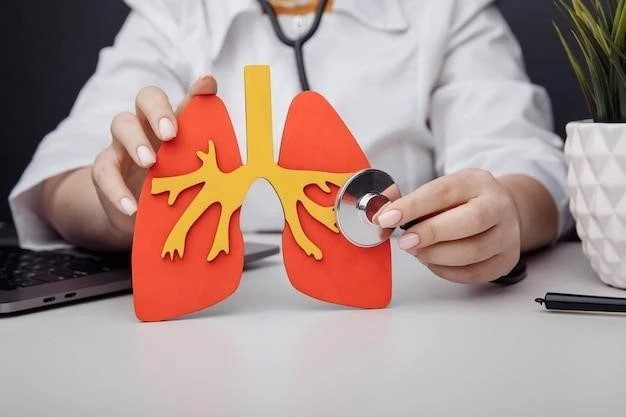Introduction to Pulmonary Atresia with Intact Ventricular Septum
Pulmonary atresia with intact ventricular septum (PA-IVS) is a rare congenital heart defect, accounting for less than 1% of total heart defects. The condition is characterized by complete obstruction in the right ventricular outflow. The disease presents a complex range of morphological variations with significant implications for therapy and prognosis.
Pulmonary atresia with intact ventricular septum (PA-IVS) is a rare congenital heart defect, accounting for less than 1% of total heart defects. It is characterized by complete obstruction in the right ventricular outflow tract due to the absence of a connection between the right ventricle and the pulmonary artery. The rarity of this condition poses challenges for treatment and management, requiring specialized care and individualized approaches.
Definition and Rarity
Pulmonary atresia with intact ventricular septum (PA-IVS) is a rare congenital heart defect where the pulmonary valve is blocked, and there is no hole between the heart’s pumping chambers. This condition is uncommon, affecting less than 1% of individuals with heart defects, making it a challenging condition to manage due to its complexity and low prevalence.
The spectrum of pulmonary atresia with intact ventricular septum (PAIVS) encompasses a variety of cardiac anomalies, including right ventricular (RV) hypoplasia, tricuspid valve hypoplasia, and coronary artery abnormalities. The morphological variations range from a normal-sized or slightly hypoplastic tripartite right ventricle to a diminutive unipartite right ventricle with a narrowed or atretic infundibulum. These abnormalities impact treatment strategies and outcomes, requiring individualized approaches based on the specific morphologic features present in each case.

Epidemiology and Incidence
Pulmonary atresia with intact ventricular septum (PAIVS) affects 1 in 7000 newborn infants in the United States annually. This rare congenital heart defect has a substantial morphological heterogeneity, leading to varied management strategies and outcomes. The condition’s complexity and low prevalence highlight the need for specialized care and individualized treatment approaches.
Prevalence in Newborn Infants
Pulmonary atresia with intact ventricular septum (PAIVS) is a rare congenital heart defect that affects 1 in 7000 newborn infants in the United States every year. The disease spectrum presents a wide range of morphologic abnormalities, contributing to varied management strategies and outcomes. The complexity of PAIVS highlights the importance of specialized care and tailored treatment approaches for affected newborns.
Range of Morphologic Abnormalities
The spectrum of pulmonary atresia with intact ventricular septum (PAIVS) encompasses a variety of cardiac anomalies, including right ventricular (RV) hypoplasia, tricuspid valve hypoplasia, and coronary artery abnormalities. The morphological variations range from a normal-sized or slightly hypoplastic tripartite right ventricle to a diminutive unipartite right ventricle with a narrowed or atretic infundibulum. These abnormalities impact treatment strategies and outcomes, requiring individualized approaches based on the specific morphologic features present in each case.
Imaging plays a crucial role in the diagnosis and evaluation of pulmonary atresia with intact ventricular septum (PA-IVS). Modalities such as echocardiography, MRI, and CT scans are utilized to assess cardiac anatomy, ventricular function, and blood flow patterns. These imaging techniques provide valuable insights into the morphologic abnormalities present, guiding treatment decisions and prognostic assessments for individuals with PA-IVS.
Imaging Techniques and Evaluation
Imaging plays a crucial role in the diagnostic process for patients with pulmonary atresia with intact ventricular septum (PA-IVS). Echocardiography, MRI, and CT scans are commonly employed to evaluate cardiac anatomy, ventricular function, and blood flow patterns. These imaging modalities provide essential information about the morphologic abnormalities present in PA-IVS, assisting healthcare providers in making informed treatment decisions and predicting outcomes.
Management Options and Surgical Interventions
Managing pulmonary atresia with intact ventricular septum (PA-IVS) involves a multidisciplinary approach combining medical therapy, interventional procedures, and surgical interventions. Treatment aims to optimize oxygenation, maintain cardiac function, and promote long-term outcomes. Surgical options may include right ventricular decompression, shunt placements, or complex repair procedures tailored to the individual’s specific cardiac anatomy. The choice of intervention is influenced by the severity of anatomical abnormalities and the overall hemodynamic status of the patient.
The complex anatomic variability seen in pulmonary atresia with intact ventricular septum (PA-IVS) poses significant challenges in determining optimal therapeutic approaches. The diverse morphologic abnormalities present necessitate tailored treatment strategies to address the specific cardiac anatomy of each individual affected by PA-IVS. These variations can impact the prognosis and effectiveness of different management interventions, highlighting the importance of personalized care for patients with this rare congenital heart defect;
Impact of Anatomic Variability on Therapy
The diverse anatomical variations observed in pulmonary atresia with intact ventricular septum (PA-IVS) present challenges in determining effective therapeutic strategies. Individualized treatment plans are essential to address the unique cardiac anatomy of each patient. The complexity of anatomical variability significantly influences therapy decisions and long-term outcomes for individuals affected by PA-IVS, underscoring the importance of personalized care in managing this congenital heart defect.

